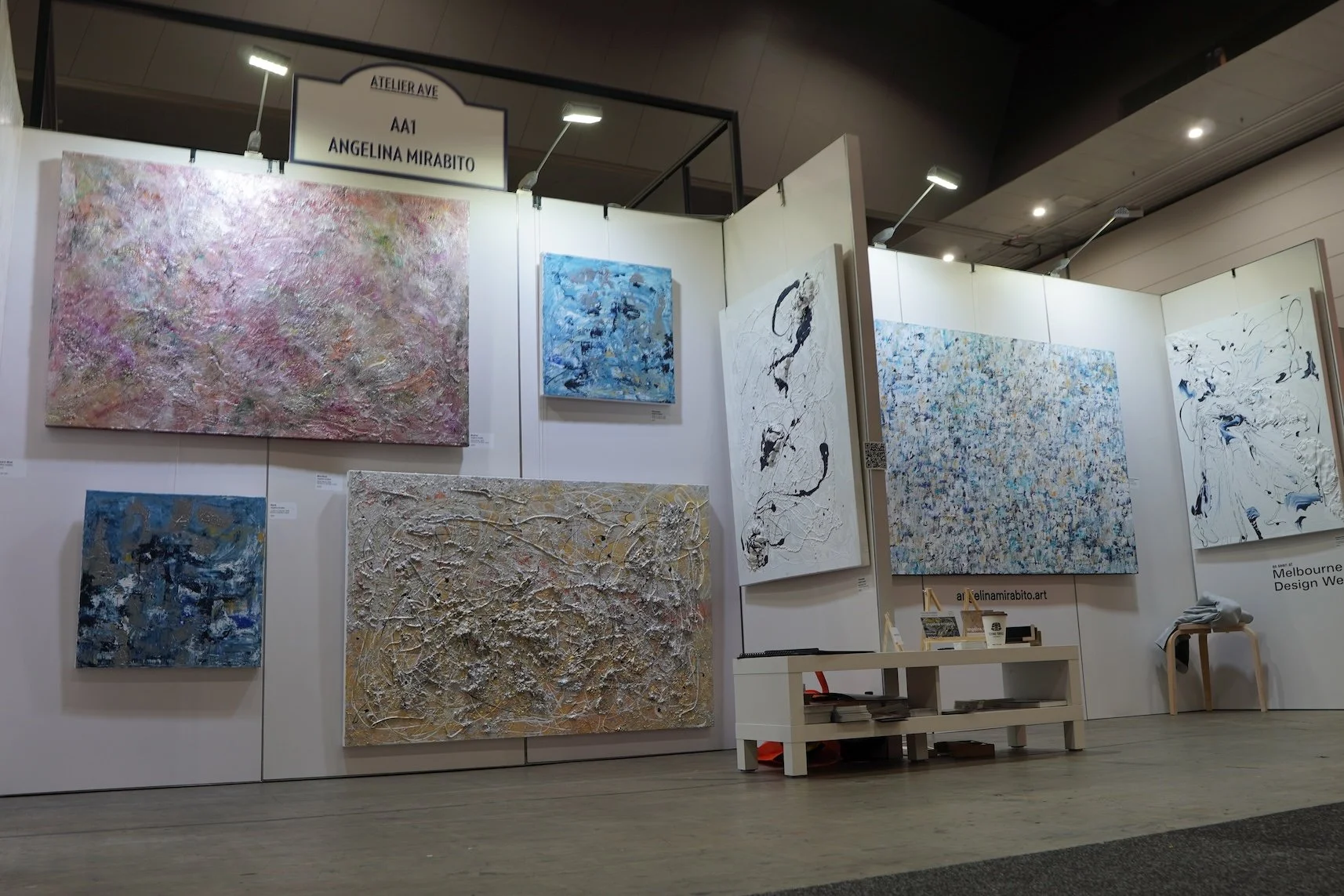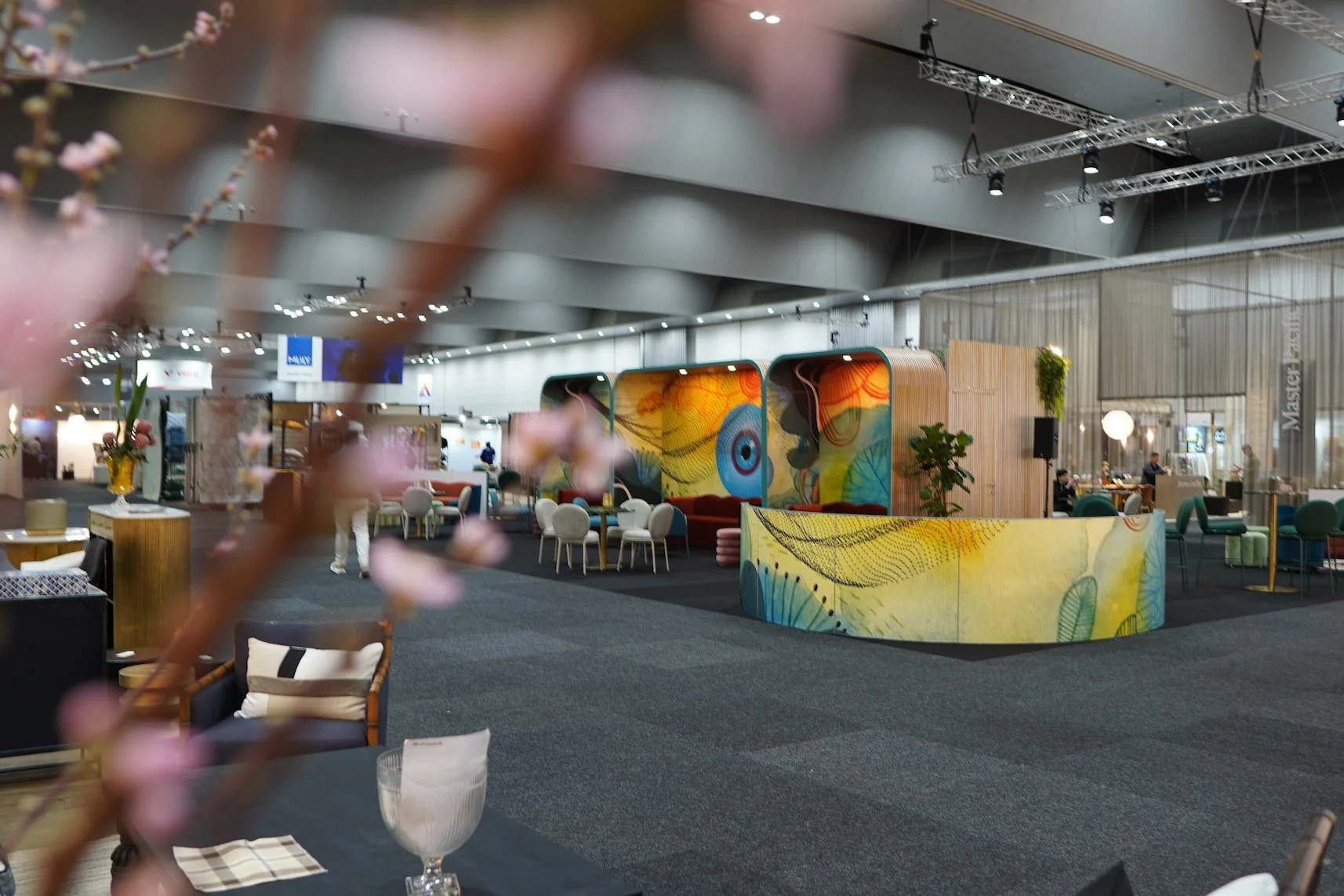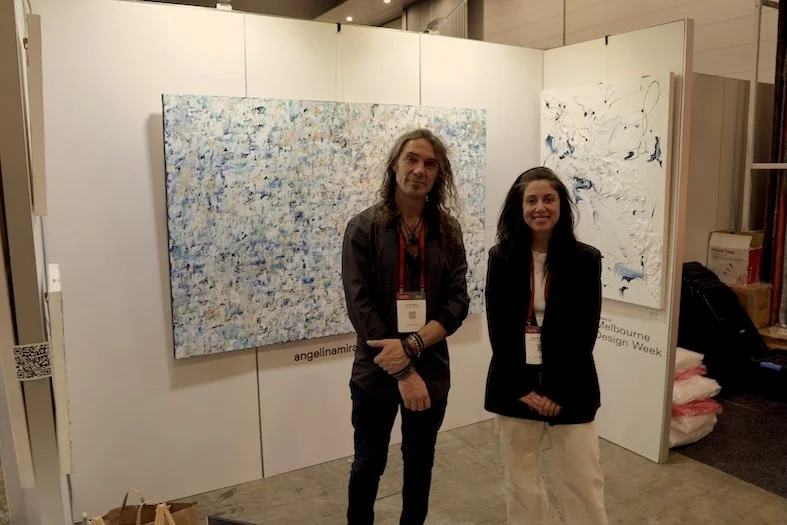Reflections from the Décor + Design Show
Last week, we had Angelina Mirabito’s stand at the Convention Centre as part of the Décor + Design Show. The month prior, we were there for the Design Show, same venue, completely different experience.
The first thing we learned was that we’d made an inaccurate assumption: that the two shows would be similar. They weren’t. The layout, exhibitors, and attendees were about 90% different. And that’s actually a strength. Both are excellent shows, each with its own distinct identity, rhythm, and audience.
Across these two events, and following on from our participation in Melbourne Design Week earlier this year, Romulus Folio has had the opportunity to engage with designers, architects, stylists, and interior professionals in a sustained way. These conversations have offered valuable insight into how original art is viewed, integrated, and commissioned within design practices. We’ve come away with new collaborations, emerging partnerships, and a deeper appreciation of the dialogue between visual art and spatial design.
We were fortunate to have a strong position in the floor plan, and the energy of the Décor + Design Show was vibrant. The visitors who stopped to speak with us, many of them outside the typical ‘art fair’ audience, brought new perspectives and unexpected conversations, connections and opportunities. Some of the most meaningful interactions happened organically, with people we hadn’t anticipated connecting with here.
After three back-to-back design-focused events, we now turn our attention to the Affordable Art Fair next month, a more traditional art fair context. We’re excited for the contrast and curious to see how different audiences encounter and respond to the work in a setting fully dedicated to art. A gallery-led art fair that exclusively exhibits original contemporary artworks, including limited edition photography and other media.
What has stood out through this entire process is the importance of showing up; to observe, to learn, to test ideas, and to take part in multiple conversations at once. We’ve found that expanding the context in which art is shown not only reveals new audiences but invites deeper questions about value, placement, and meaning.
And perhaps the most affirming lesson is this: we don’t need to fit into one place. Sometimes the most interesting outcomes happen when you position original art in environments where it’s not necessarily expected or sought. While the Décor + Design Show wasn’t dedicated to fine art, it made space for it, and that space, however modest, became powerful.
Ultimately the lesson reinforced is that art needs to be seen. And being present, in spaces willing to make room for art too, is always worth it. Art being visible in whatever ways it can be is the very thing that creates the conditions for new possibilities, growth, new collaborations, opportunities and projects.
This has been the case for us. We forward to sharing more soon.



